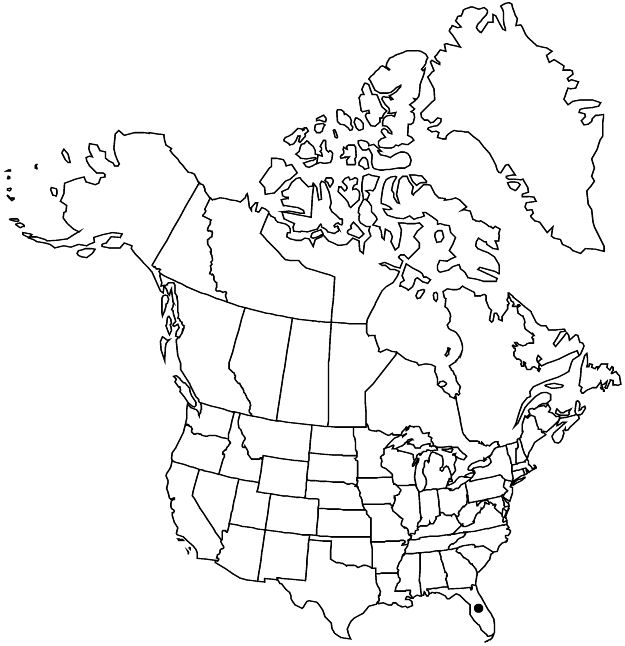Hypericum chapmanii
Contr. Gray Herb. 189: 22. 1962.
Shrubs, erect, treelike, to 40 dm, bark thick-corky, striate, exfoliating in thin, papery sheets or plates. Stems: internodes 4-lined at first, soon 4-angled, then terete, not glaucous. Leaf-blades linear-subulate, 8–25 × 0.5–0.7 mm, not glaucous, base articulated, parallel or slightly expanded, margins revolute, apex acute, midrib unbranched. Inflorescences shortly cylindric, 1–3-flowered, often with single flowers or triads from 1–2 proximal nodes. Flowers 12–15 mm diam.; sepals deciduous, not enclosing capsule, 5, linear-subulate, unequal, 5–7 × 0.5 mm, not glaucous; petals 5, bright-yellow, oblong-spatulate, 7–9 mm; stamens deciduous, 75; ovary 3-merous; styles 2.5–4 mm. Capsules narrowly pyramidal-ovoid, 6 × 2.4 mm. Seeds not carinate, 0.6–0.8 mm; testa finely foveolate-reticulate.
Phenology: Flowering summer (Jun–Aug).
Habitat: Pond margins, flatwoods, depressions
Elevation: 0–10 m
Discussion
Hypericum chapmanii differs from H. fasciculatum in its taller, single-stemmed habit, thicker stems (to 10–15 cm diameter) with fluted, spongy bark containing large laticifers, and fewer-flowered inflorescences.
Hypericum chapmanii is known from the panhandle of northwestern Florida.
Selected References
None.
